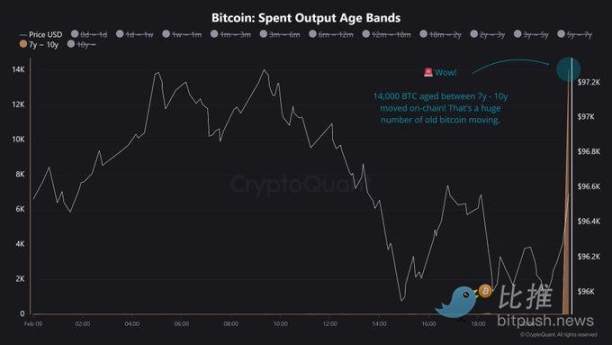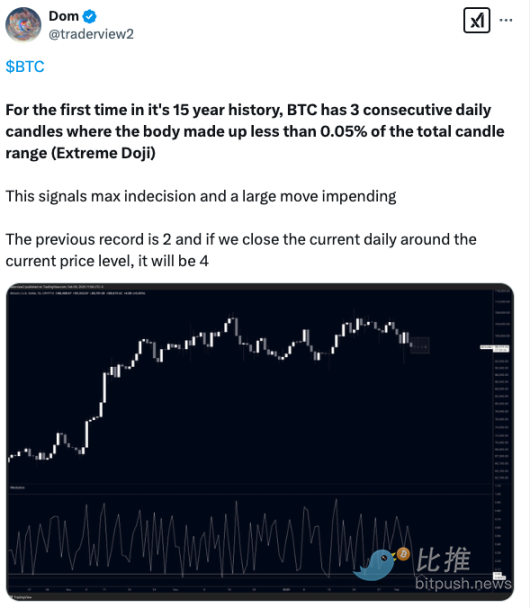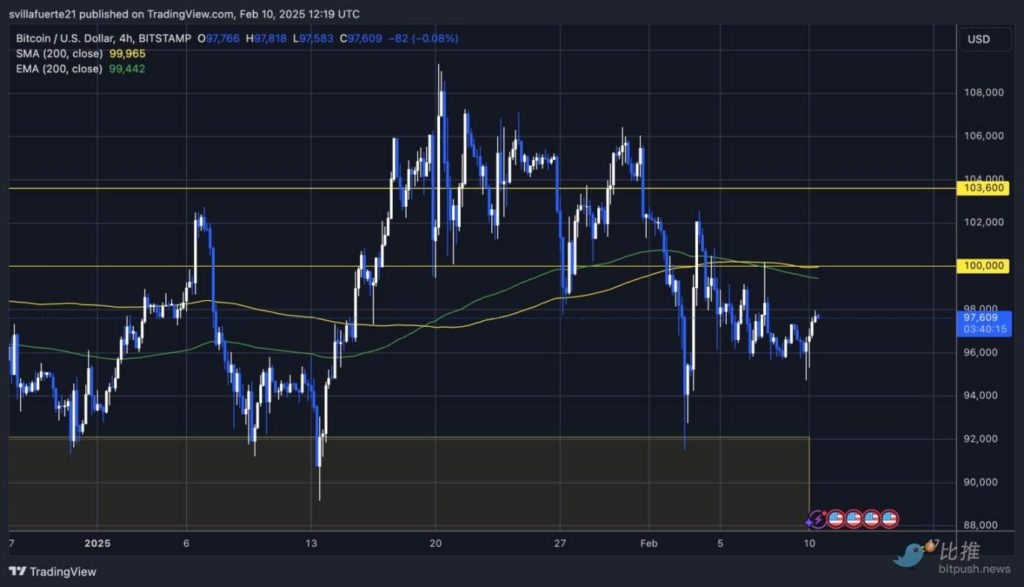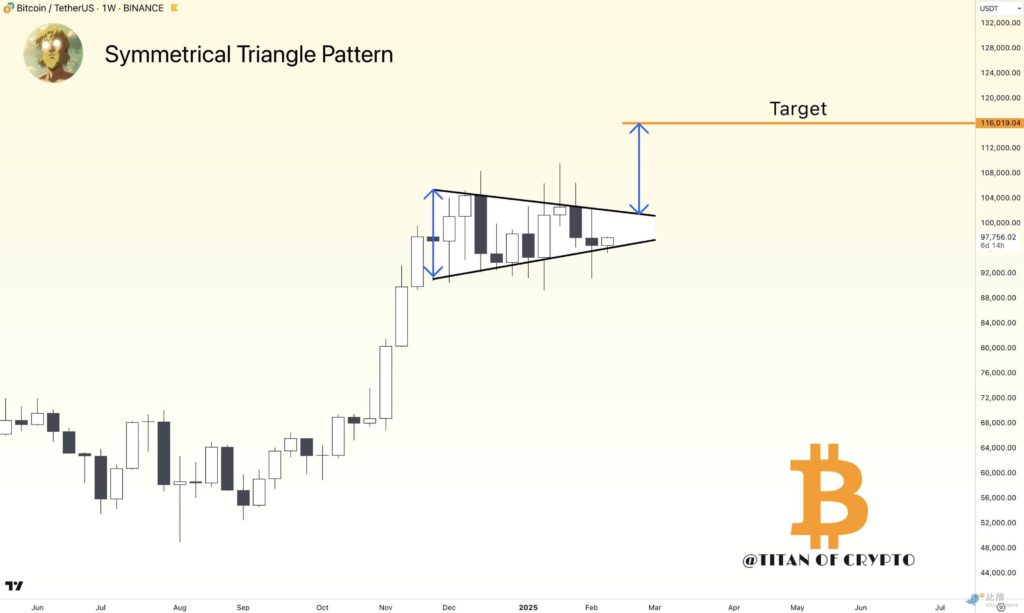Long-Term Holder Movements and Market Signals
On February 9, renowned analyst Maartunn shared on-chain data: 14,000 Bitcoins with 7 to 10 years of history have been moved on the chain.

The reactivation of these long-dormant Bitcoins is usually seen as an important signal, as these actions may indicate various motivations - long-term holders may be preparing for a potential upswing, institutions may be rebalancing their positions, or market participants may be concerned about ongoing selling pressure. Regardless, the reactivation of such a large amount of old Bitcoins usually portends imminent and violent price volatility. While such actions are not uncommon during market consolidation periods, they add further uncertainty to the current market sentiment.
Additionally, analyst DOM has identified an unprecedented "Doji" candlestick pattern on the Bitcoin daily chart, a formation that typically signals market uncertainty, similar to the trend following the FTX collapse in November 2022.
DOM stated: "For the first time in Bitcoin's 15-year history, there have been three consecutive 'extreme Doji' candlesticks, with the body of each candlestick accounting for less than 0.05% of the entire candlestick range. This indicates extreme market indecision and portends significant volatility ahead."

It is worth noting that Bitcoin had two consecutive "extreme Doji" candlesticks in November 2022, followed by a 620% price rebound. If history repeats itself, Bitcoin may be on the verge of another explosive price movement.
Key Price Levels and Technical Analysis
According to TradingView data, Bitcoin's current price is hovering around $97,600. Analyst Sebastian believes that to reignite the bullish momentum, Bitcoin first needs to firmly hold the $98,000 key level, which will lay the foundation for breaking through the psychological $100,000 barrier. Once Bitcoin successfully breaks above and consolidates above the $100,000 mark, it will confirm the return of strong bullish momentum and could further explore higher supply zones, ushering in a new uptrend.

However, the current demand zone of $96,000 to $97,000 must be defended to provide support for the potential upswing. If this zone is breached, it could trigger more selling pressure. In such a scenario, Bitcoin may fall below $95,000 and test the demand zone around $90,000. Such a trajectory would severely dampen market sentiment and further strengthen bearish expectations.
Bitcoin has also recently formed a symmetrical triangle pattern, a technical formation that typically signals a significant breakout is imminent.
Market analyst Titan of Crypto points out that Bitcoin's price is likely to break out of the triangle's uptrend line and ultimately reach a target of $116,000. According to technical analysis rules, the calculation of the upside target is to add the maximum distance between the triangle's upper and lower trend lines to the potential breakout point, providing a theoretical basis for Bitcoin's upside target.

Outlook
Grayscale Research head Zach Pandl predicts that with the support of favorable Trump policies, Bitcoin may set a new all-time high in the first quarter of 2025. Nevertheless, $80,000 remains a popular target for many analysts in the short term. Investment research firm Bravo Research points out that if the price falls to this level, it will provide traders with an "opportunity to buy the dip".
In summary, Bitcoin is currently at a critical technical juncture, and the balance of power between the bulls and bears will determine the short-term market direction. Investors need to closely monitor the performance of the $98,000 and $96,000 key levels, as a breakout in either direction could trigger significant market volatility.







